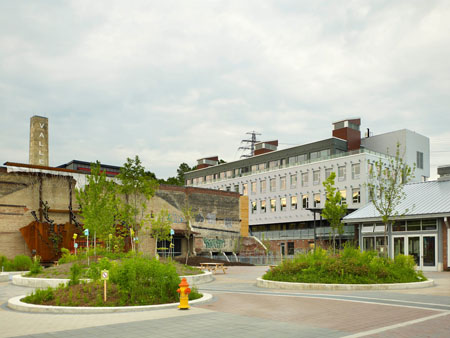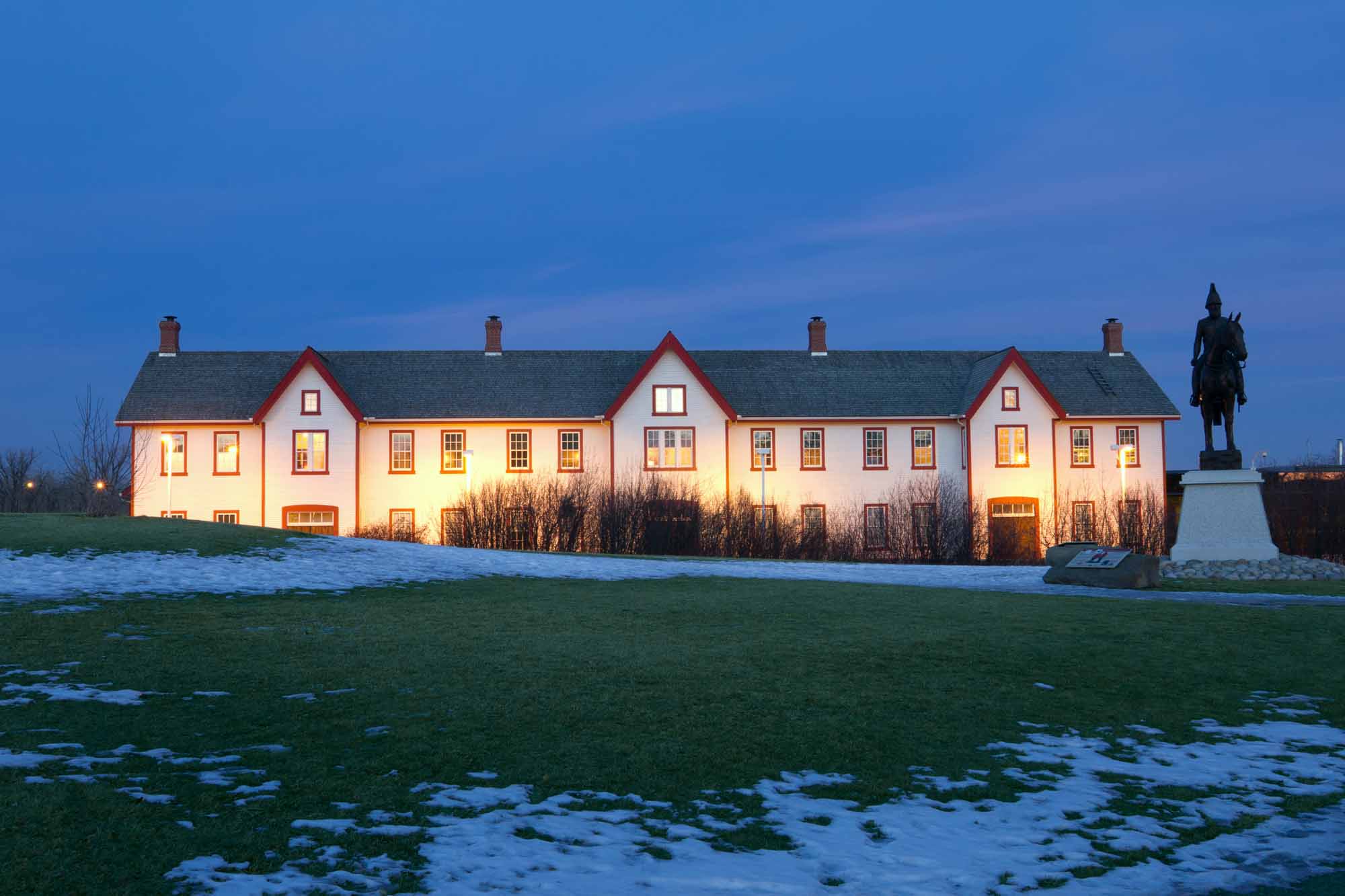Browse "Historic sites"
-
Article
Dawson Archaeological Site
The Dawson site is an ancient Iroquoian village located on the Island of Montréal, next to Mount Royal. The site, which was initially located on a sand dune, covers about two acres.
"https://d2ttikhf7xbzbs.cloudfront.net/media/media/96890b03-5f94-4d4c-9109-577a21f8b989.jpg" // resources/views/front/categories/view.blade.php
https://d2ttikhf7xbzbs.cloudfront.net/media/media/96890b03-5f94-4d4c-9109-577a21f8b989.jpg
-
Article
Debert and Belmont Palaeoindian Sites
The Debert archaeological site was discovered near the city of Debert in north-central Nova Scotia in 1948, and excavated between 1962 and 1964.
"https://d2ttikhf7xbzbs.cloudfront.net/media/media/f28e80bc-14da-4c69-b71c-6e16f91ed72d.jpg" // resources/views/front/categories/view.blade.php
https://d2ttikhf7xbzbs.cloudfront.net/media/media/f28e80bc-14da-4c69-b71c-6e16f91ed72d.jpg
-
Article
Diggity Archaeological Site
The Diggity archaeological site is located at the southeastern end of Spednic Lake, near the entrance to Palfrey Lake, in southwestern New Brunswick.
"https://d2ttikhf7xbzbs.cloudfront.net/media/media/5c63f682-2f7c-40a8-b0d4-287fd7865464.jpg" // resources/views/front/categories/view.blade.php
https://d2ttikhf7xbzbs.cloudfront.net/media/media/5c63f682-2f7c-40a8-b0d4-287fd7865464.jpg
-
Article
Distillery Historic District / Gooderham & Worts National Historic Site
In 1832, English immigrants and brothers-in-law James Worts and William Gooderham built a 22-metre brick windmill on the edge of Toronto Bay that soon became a symbol of the young city.
"https://d2ttikhf7xbzbs.cloudfront.net/media/media/30c24516-9c51-4a8a-9d32-3851f149973c.jpg" // resources/views/front/categories/view.blade.php
https://d2ttikhf7xbzbs.cloudfront.net/media/media/30c24516-9c51-4a8a-9d32-3851f149973c.jpg
-
Article
Doak Historic Site
Doak Historic Site is in Doaktown, NB, 94 km northeast of Fredericton. Robert Doak left Ayrshire in Scotland to take up land on the upper MIRAMICHI RIVER in New Brunswick in the early 1820s.
"https://development.thecanadianencyclopedia.ca/images/tce_placeholder.jpg?v=e9dca980c9bdb3aa11e832e7ea94f5d9" // resources/views/front/categories/view.blade.php
https://development.thecanadianencyclopedia.ca/images/tce_placeholder.jpg?v=e9dca980c9bdb3aa11e832e7ea94f5d9
-
Article
Droulers-Tsiionhiakwatha Archaeological Site
The Droulers-Tsiionhiakwatha archaeological site is located in extreme southwest Québec, in Saint-Anicet in the Haut-Saint-Laurent area.
"https://d2ttikhf7xbzbs.cloudfront.net/media/media/9a4f5824-4fef-4ee0-8b04-92257d768832.jpg" // resources/views/front/categories/view.blade.php
https://d2ttikhf7xbzbs.cloudfront.net/media/media/9a4f5824-4fef-4ee0-8b04-92257d768832.jpg
-
Article
Evergreen Brick Works
Located in Toronto's Don Valley, Evergreen Brick Works helps to reconnect Torontonians with the rich natural heritage and invaluable recreational opportunities in the Don Valley Watershed.
"https://d2ttikhf7xbzbs.cloudfront.net/media/media/468f3871-9249-4aef-8e77-ac29d9cb87ad.jpg" // resources/views/front/categories/view.blade.php
https://d2ttikhf7xbzbs.cloudfront.net/media/media/468f3871-9249-4aef-8e77-ac29d9cb87ad.jpg
-
Macleans
Farewell to Montreal Forum
This article was originally published in Maclean’s magazine on March 18, 1996. Partner content is not updated. Yvon Lambert cherishes the memory of it still, the magic moment when he briefly wore the crown. Like so many Montreal fables, it is a story about hockey. And like most hockey stories in the city, it happened at the Forum, on a warm evening in May 17 years ago.
"https://development.thecanadianencyclopedia.ca/images/tce_placeholder.jpg?v=e9dca980c9bdb3aa11e832e7ea94f5d9" // resources/views/front/categories/view.blade.php
https://development.thecanadianencyclopedia.ca/images/tce_placeholder.jpg?v=e9dca980c9bdb3aa11e832e7ea94f5d9
-
Article
Ferryland Archaeological Site
Excavations at Ferryland, Newfoundland, 72 km south of St John's, have revealed a remarkable record of European exploitation and settlement during the first two centuries after John Cabot's visit in 1497.
"https://d2ttikhf7xbzbs.cloudfront.net/media/media/bce6fa19-99d1-4c3a-a8ef-b1e1b19b2f3e.jpg" // resources/views/front/categories/view.blade.php
https://d2ttikhf7xbzbs.cloudfront.net/media/media/bce6fa19-99d1-4c3a-a8ef-b1e1b19b2f3e.jpg
-
Article
Fishermen's Life Museum
Many of Nova Scotia's HISTORIC SITES reflect the wealth that was made from the sea; the Fishermen's Life Museum tells the story of the ordinary men and women who made a living from fishing. This historic site in Jeddore Oyster Pond, NS, was built in 1857 by a fisherman, James Myers.
"https://development.thecanadianencyclopedia.ca/images/tce_placeholder.jpg?v=e9dca980c9bdb3aa11e832e7ea94f5d9" // resources/views/front/categories/view.blade.php
https://development.thecanadianencyclopedia.ca/images/tce_placeholder.jpg?v=e9dca980c9bdb3aa11e832e7ea94f5d9
-
Article
Fort Amherst
Fort Amherst, on the west shore of Charlottetown Harbour, Prince Edward Island, was built in late 1758 by the British. The site was known previously as Port La Joie, established in 1720 as the capital of the French colony of Île Saint-Jean.
"https://development.thecanadianencyclopedia.ca/images/tce_placeholder.jpg?v=e9dca980c9bdb3aa11e832e7ea94f5d9" // resources/views/front/categories/view.blade.php
https://development.thecanadianencyclopedia.ca/images/tce_placeholder.jpg?v=e9dca980c9bdb3aa11e832e7ea94f5d9
-
Article
Fort Anne
For the next 40 years, the British at Fort Anne maintained a precarious position in the Acadian-dominated province and were frequently attacked by French and Indigenou raiding parties. The status of the fort declined with the founding of Halifax (1749) and the expulsion of the Acadians (1755).
"https://d2ttikhf7xbzbs.cloudfront.net/media/media/8cd2ef08-9dc5-4094-8da3-129abfe25600.jpg" // resources/views/front/categories/view.blade.php
https://d2ttikhf7xbzbs.cloudfront.net/media/media/8cd2ef08-9dc5-4094-8da3-129abfe25600.jpg
-
Article
Fort Battleford
When the settlement of Battleford, in what is now west-central Saskatchewan, was named the capital of the North-West Territories in 1876, the North-West Mounted Police established a post to deal with anticipated problems with Indigenous people.
"https://development.thecanadianencyclopedia.ca/images/tce_placeholder.jpg?v=e9dca980c9bdb3aa11e832e7ea94f5d9" // resources/views/front/categories/view.blade.php
https://development.thecanadianencyclopedia.ca/images/tce_placeholder.jpg?v=e9dca980c9bdb3aa11e832e7ea94f5d9
-
Article
Fort Beauséjour
Fort Beauséjour, on the west bank of the Missaguash River near present-day Sackville, New Brunswick was built 1751-55 by the French as a counter to nearby British Fort Lawrence (near Amherst, NS).
"https://development.thecanadianencyclopedia.ca/images/tce_placeholder.jpg?v=e9dca980c9bdb3aa11e832e7ea94f5d9" // resources/views/front/categories/view.blade.php
https://development.thecanadianencyclopedia.ca/images/tce_placeholder.jpg?v=e9dca980c9bdb3aa11e832e7ea94f5d9
-
Article
Fort Calgary
Fort Calgary is located at the junction of the Bow and Elbow rivers on the site of the present-day city of Calgary. It was established in 1875 as a post of the North-West Mounted Police. In 1925, Fort Calgary was designated a National Historic Site.
"https://d2ttikhf7xbzbs.cloudfront.net/media/media/e05805b7-fc65-443a-9f50-fbcf53aac66c.jpg" // resources/views/front/categories/view.blade.php
https://d2ttikhf7xbzbs.cloudfront.net/media/media/e05805b7-fc65-443a-9f50-fbcf53aac66c.jpg
